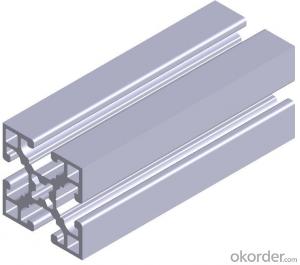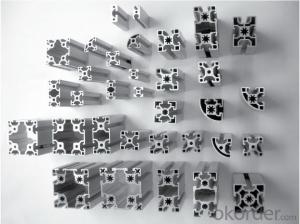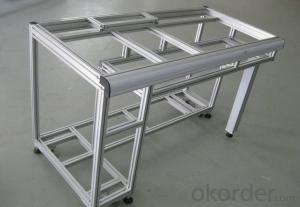Aluminium Profile Building Expansion Joints
- Loading Port:
- Shanghai
- Payment Terms:
- TT OR LC
- Min Order Qty:
- 5 m.t.
- Supply Capability:
- 2000 m.t./month
OKorder Service Pledge
OKorder Financial Service
You Might Also Like
Item specifice
1.Structure of Aluminium Profile Building Expansion Joints Description:
Anodizing (also spelled anodising, particularly in the UK and Australia) is an electrolytic passivation process used to increase the thickness of the natural oxide layer on the surface of metal parts. Anodized aluminium surfaces, for example, are harder than aluminium but have low to moderate wear resistance that can be improved with increasing thickness or by applying suitable sealing substances.
2.Main Features of the Aluminium Profile Building Expansion Joints:
High corrosion-resistance;
weather-resistance;
heat-resistance;
alkali-resistance and impact-resistance properties.
3.Aluminium Profile Building Expansion Joints Images:
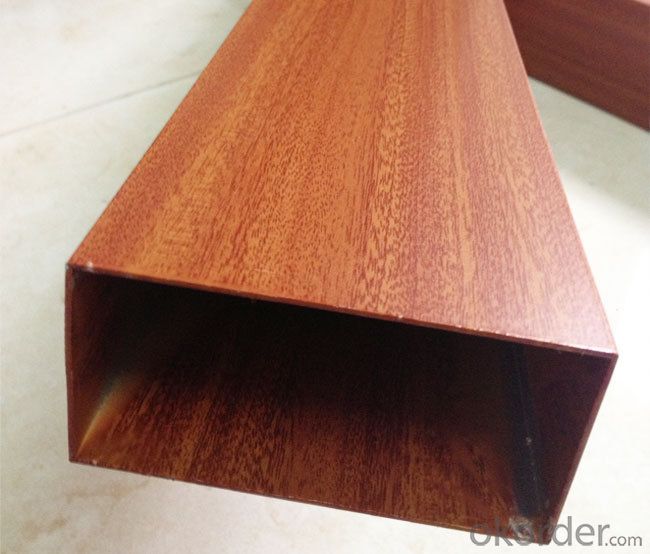
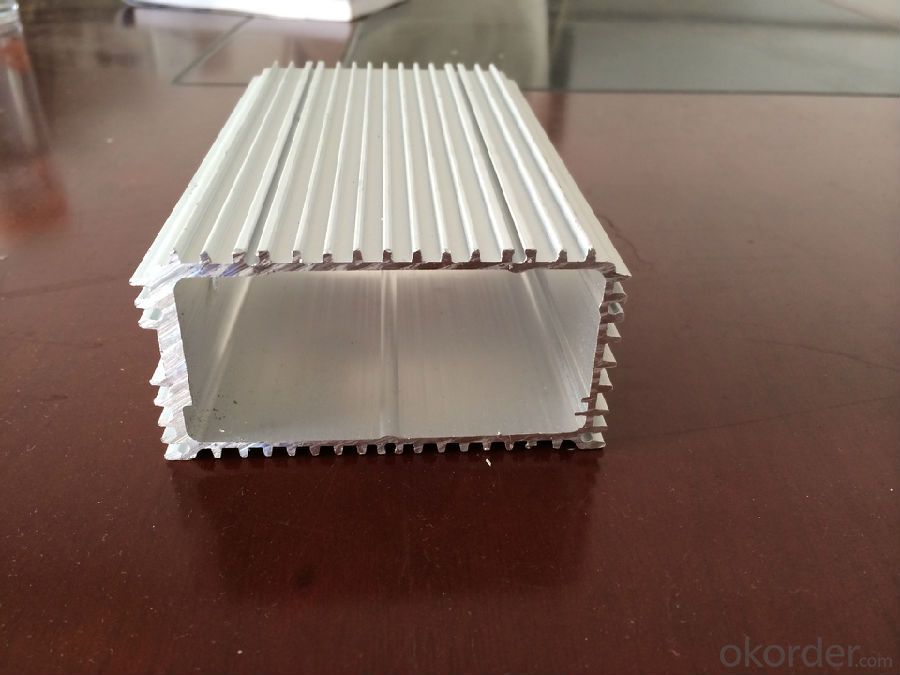
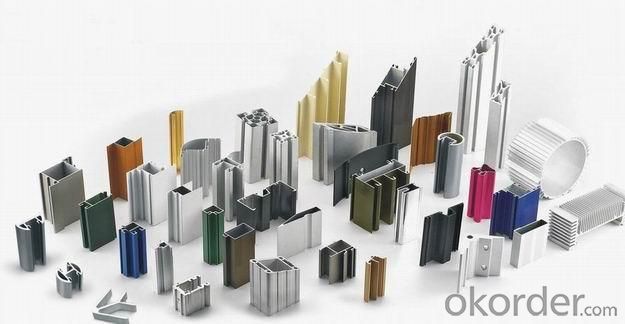
4.Aluminium Profile Building Expansion JointsSpecification:
1. Material: 6063,6061,6060,6005,6005A,etc.
2. Temper: T5 or T6
3. Finish: Mill finish, anodizing, powder coating, electrophoresis, wooden transfer or pvdf/carbon-flouride coated, polishing, brushing, sand blasting
4. Various colors: Silver, bronze, black, gold, blue, grey, champagne, bright, etc.
5. Machining: Cutting, punching, drilling, tapping, milling, bending, welding, CNC etc.
5.FAQ:
①How about your company?
A world class manufacturer & supplier of castings forging in carbon steel and alloy steel,is one of the large-scale professional investment casting production bases in China, consisting of both casting foundry forging and machining factory. Annually more than 8000 tons Precision casting and forging parts are exported to markets in Europe, America and Japan. OEM casting and forging service available according to customer’s requirements.
②How to guarantee the quality of the products?
We have established the international advanced quality management system,every link from raw material to final product we have strict quality test;We resolutely put an end to unqualified products flowing into the market. At the same time, we will provide necessary follow-up service assurance.
- Q:How do you prevent scratches during transportation of aluminum sheets?
- To prevent scratches during transportation of aluminum sheets, there are several measures that can be taken: 1. Proper packaging: Ensure that the aluminum sheets are packaged securely in appropriate materials such as bubble wrap, foam, or cardboard to provide cushioning and protection from external impacts. 2. Use protective layers: Place protective layers such as paper or plastic film between individual sheets to prevent direct contact and minimize chances of scratching. 3. Secure stacking: When loading aluminum sheets onto transportation vehicles, ensure they are stacked securely to prevent any movement or shifting during transit. This can be achieved by using appropriate strapping or palletizing techniques. 4. Handling with care: Train personnel involved in the transportation process to handle the aluminum sheets with care, avoiding dragging or sliding them against rough surfaces that may cause scratches. 5. Avoid contact with sharp objects: Make sure that the aluminum sheets are not in contact with sharp objects or edges that may cause scratches. This can be achieved by keeping them away from other materials or using protective covers. 6. Regular inspection: Regularly inspect the aluminum sheets during transportation to identify any potential scratches or damages. If any are found, immediate action should be taken to prevent further damage. By following these preventive measures, the chances of scratches occurring during the transportation of aluminum sheets can be significantly reduced, ensuring that the sheets are delivered in optimal condition to their destination.
- Q:I am ultimately looking to have a bike that is good for both everday commuting and touring with panniers/racks long distance with camping. From what I've read on the internet steel frames are more forgiving and ride smoother. The guy at my local bike shop tells me aluminum frames have more flex and ride better. I don't know if he's just trying to make a sale (Giant dealer) or to trust him, unfortunately the staff there are all just racers not tourers. If you can recommend any brands/models to check out that'd be good. From my research thus far I am in love with Co Motion bikes, just not the price! I'm looking at $1000 max for a good touring bike. Thanks!
- I've been on an aluminum frame (Trek 1220) for about 16,000 miles and I find it somewhat unforgiving. I test drove, after buying my bike, a steel frame and I thought it was more comfortable. The thing about the aluminum frame is that it corners GREAT due to its rigidity. Find a bike shop that will let you take a tester for about a 1/2 hour and take the bike for a test drive on a somewhat irregular road. You're investing a lot so, you should test drive.
- Q:Can 101 aluminum sheets be used in aerospace applications?
- Yes, 101 aluminum sheets can be used in aerospace applications. 101 aluminum is a commonly used alloy in the aerospace industry due to its excellent strength-to-weight ratio, high corrosion resistance, and good formability. It is often used for structural components, such as aircraft skins, wings, and fuselage panels. Additionally, 101 aluminum sheets can be easily machined and welded, making them ideal for aerospace applications where precision and durability are crucial.
- Q:What are the different methods of surface cleaning for adhesive bonding of aluminum sheet?
- There are multiple techniques available for surface cleaning when it comes to adhesive bonding of aluminum sheet. These techniques comprise mechanical cleaning, chemical cleaning, and plasma cleaning. 1. In the case of mechanical cleaning, the objective is to physically eliminate any impurities or debris from the aluminum sheet's surface. This can be accomplished through various means such as sanding, grinding, or scrubbing with abrasive materials. Although mechanical cleaning effectively gets rid of loose particles and surface imperfections, it may not be able to eliminate all types of contaminants. 2. Chemical cleaning, on the other hand, involves the utilization of specific cleaning agents or solvents to eliminate impurities from the aluminum surface. These cleaning agents have the ability to dissolve or dislodge dirt, grease, oil, or other organic substances. To ensure thorough surface preparation, chemical cleaning is often combined with mechanical cleaning. It is crucial to select a cleaning agent that is compatible with both the adhesive and the aluminum sheet to avoid any adverse reactions. 3. Plasma cleaning, a more advanced technique, employs ionized gases to clean and activate the surface of the aluminum sheet. The plasma generates reactive species that can break down and eliminate contaminants, while also creating active sites for improved adhesion. Plasma cleaning is highly effective in removing organic and inorganic impurities, as well as oxide layers that might impede bonding. Each method possesses its own strengths and limitations, and the choice of surface cleaning technique relies on the specific requirements of the adhesive bonding process. Thorough evaluation of the surface condition and identification of the type of contaminants present are crucial in determining the most suitable cleaning method. Additionally, proper adherence to surface preparation techniques is vital to ensure successful adhesive bonding of aluminum sheet.
- Q:I am looking at buying a used 1983-84 Eldorado but have read some things about the reliability of the aluminum engine. Any thoughts? Thanks.
- 1984 Cadillac
- Q:Are aluminum sheets suitable for use in cryogenic environments?
- Yes, aluminum sheets are suitable for use in cryogenic environments. Aluminum has excellent thermal conductivity and low density, making it an ideal material for cryogenic applications. It can withstand extremely low temperatures without losing its structural integrity or experiencing significant thermal expansion. Additionally, aluminum has good corrosion resistance and can be easily fabricated into various shapes and sizes. These properties make aluminum sheets commonly used in cryogenic systems, such as cryostats, superconducting magnets, and liquid nitrogen storage tanks.
- Q:Can aluminum sheets be laminated with other materials?
- Indeed, it is possible to laminate aluminum sheets with alternative substances. Lamination denotes the fusion of multiple layers of diverse materials, thereby yielding a composite material that possesses heightened qualities. Aluminum sheets can be laminated with a variety of materials, including plastics, fabrics, papers, or other metals, through the utilization of either adhesive bonding or the application of heat and pressure. This process of lamination facilitates the amalgamation of favorable attributes from distinct materials, ultimately yielding a final product that exhibits elevated strength, durability, appearance, or specific functionality. Laminated aluminum sheets find widespread employment in industries such as construction, automotive, aerospace, and packaging, where the amalgamated properties of the laminated substances confer distinct advantages.
- Q:How do aluminum sheets perform in terms of fire resistance?
- Aluminum sheets have excellent fire resistance properties. Aluminum is a non-combustible material, meaning it does not burn or contribute to the spread of fire. In fact, aluminum has a high melting point of around 660 degrees Celsius (1220 degrees Fahrenheit), which makes it highly resistant to heat. When exposed to fire, aluminum forms a thin layer of oxide on its surface, which acts as a protective barrier against further oxidation. This oxide layer is highly stable and helps to prevent the material from igniting or releasing flammable gases. Additionally, aluminum sheets have low thermal conductivity, which means they do not transfer heat as easily as other metals, further enhancing their fire resistance. These fire-resistant properties make aluminum sheets a preferred choice in various applications where fire safety is a concern, such as building construction, aerospace industry, automotive manufacturing, and electrical enclosures. Aluminum sheets are often used in exterior cladding, roofing, and insulation systems, where they provide an additional layer of protection against fire hazards. It is important to note that while aluminum sheets themselves are highly fire-resistant, the overall fire performance of a structure or system depends on the design, installation, and other materials used in combination with aluminum sheets. Therefore, it is crucial to follow appropriate fire safety regulations and guidelines to ensure optimal fire resistance in any given application.
- Q:Can aluminum sheets be an alternative to glass in certain applications?
- Yes, aluminum sheets can be an alternative to glass in certain applications. Aluminum sheets offer several advantages over glass, making them a suitable choice in specific scenarios. Firstly, aluminum sheets are lightweight and durable, making them ideal for applications where weight is a concern, such as in aerospace or automotive industries. Glass, on the other hand, is relatively heavy and brittle, which can limit its use in certain environments. Additionally, aluminum sheets have excellent corrosion resistance, making them suitable for applications in marine or coastal environments where glass may deteriorate over time due to exposure to saltwater. Aluminum sheets also have a high strength-to-weight ratio, allowing for greater design flexibility and structural integrity compared to glass. Moreover, aluminum sheets can provide better thermal insulation properties compared to glass. They offer improved heat transfer resistance, which can be advantageous in applications where temperature control is crucial, such as in the construction industry. Furthermore, aluminum sheets can be more cost-effective than glass in certain applications. The production and installation costs of aluminum sheets are often lower compared to glass, making them a more economical choice for large-scale projects. However, it is important to note that glass still has its own unique properties and advantages that make it the preferred choice in many applications, such as its transparency and optical clarity. Glass also offers better resistance to scratches and chemical corrosion compared to aluminum sheets. In conclusion, while aluminum sheets can be a viable alternative to glass in certain applications due to their lightweight, durability, corrosion resistance, thermal insulation properties, and cost-effectiveness, the choice between the two materials ultimately depends on the specific requirements and constraints of the application in question.
- Q:Are aluminum sheets suitable for high-pressure environments?
- In high-pressure environments, aluminum sheets are generally unsuitable due to their relatively low strength-to-weight ratio compared to other materials. Consequently, there is a potential for deformation or failure under high pressure, posing safety risks. Moreover, aluminum's structural integrity is further compromised in these situations due to its relatively low melting point. Therefore, materials like steel or titanium, which offer greater strength and resistance to deformation, are typically preferred in such environments.
1. Manufacturer Overview |
|
|---|---|
| Location | |
| Year Established | |
| Annual Output Value | |
| Main Markets | |
| Company Certifications | |
2. Manufacturer Certificates |
|
|---|---|
| a) Certification Name | |
| Range | |
| Reference | |
| Validity Period | |
3. Manufacturer Capability |
|
|---|---|
| a)Trade Capacity | |
| Nearest Port | |
| Export Percentage | |
| No.of Employees in Trade Department | |
| Language Spoken: | |
| b)Factory Information | |
| Factory Size: | |
| No. of Production Lines | |
| Contract Manufacturing | |
| Product Price Range | |
Send your message to us
Aluminium Profile Building Expansion Joints
- Loading Port:
- Shanghai
- Payment Terms:
- TT OR LC
- Min Order Qty:
- 5 m.t.
- Supply Capability:
- 2000 m.t./month
OKorder Service Pledge
OKorder Financial Service
Similar products
New products
Hot products
Hot Searches
Related keywords
